
2011 Alister E. McGrath
First edition
Published by Westminster John Knox Press
Louisville, Kentucky
11 12 13 14 15 16 17 18 19 2010 9 8 7 6 5 4 3 2 1
All rights reserved. No part of this book may be reproduced or transmitted in any form or by any means, electronic or mechanical, including photocopying, recording, or by any information storage or retrieval system, without permission in writing from the publisher. For information, address Westminster John Knox Press, 100 Witherspoon Street, Louisville, Kentucky 40202-1396. Or contact us online at www.wjkbooks.com.
Unless otherwise indicated, Scripture quotations are from the New Revised Standard Version of the Bible, copyright 1989 by the Division of Christian Education of the National Council of the Churches of Christ in the U.S.A., and are used by permission.
Scripture Quotations marked NIV are from the Holy Bible, New International Version. Copyright 1973, 1978, 1984 International Bible Society. Used by permission of Zondervan Bible Publishers.
Scripture quotations marked NLT are taken from the Holy Bible, New Living Translation, copyright 1996, 2004. Used by permission of Tyndale House Publishers, Inc., Wheaton, Illinois 60189. All rights reserved.
Book design by Sharon Adams
Cover design by Lisa Buckley
Cover art Science Faction/SuperStock
Library of Congress Cataloging-in-Publication Data
McGrath, Alister E., 1953
Surprised by meaning : science, faith, and how we make sense of things / Alister E. McGrath.1st ed.
p. cm.
Includes bibliographical references (p. ).
ISBN 978-0-664-23692-2 (alk. paper)
1. Religion and science. 2. Meaning (Philosophy)Religious aspectsChristianity. I. Title.
BL240.3.M45 2011
261.55dc22
2010034955
PRINTED IN THE UNITED STATES OF AMERICA
 The paper used in this publication meets the minimum requirements
The paper used in this publication meets the minimum requirements
of the American National Standard for Information SciencesPermanence
of Paper for Printed Library Materials, ANSI Z39.48-1992.
Westminster John Knox Press advocates the responsible use of our natural resources.
The text paper of this book is made from at least 30% postconsumer waste.
Special Sales
Most Westminster John Knox Press books are available at special quantity discounts
when purchased in bulk by corporations, organizations, and special-interest groups.
For more information, please e-mail .
Contents
Acknowledgements
T his book is based on material originally prepared for the 2009 Drawbridge Lecture at Kings College London; the 2009 Gifford Lectures at the University of Aberdeen, Scotland; a reflection on the relation of science and faith broadcast in Lent 2010 by the British Broadcasting Corporation (BBC); the 2010 Laing Lecture at the London School of Theology; and the 2010 Chaplaincy Lectures at Hong Kong Baptist University. I am very grateful to the original audiences for their comments, which were invaluable in reworking the material for this book.
Chapter 1
Looking for the Big Picture
W hy do people like crime fiction so much? TV detectives have become an integral part of Western culture. The shelves of our bookstores are cluttered with the latest novels by the likes of Ian Rankin and Patricia Cornwell, as well as the greats from the past. Writers such as Sir Arthur Conan Doyle, Agatha Christie, Raymond Chandler, Erle Stanley Gardner, and Dorothy L. Sayers built their reputations on being able to hold their readers interest as countless mysterious murder cases were solved before their eyes. We devour the cases of fictional detectives such as Sherlock Holmes, Philip Marlowe, Perry Mason, Lord Peter Wimsey, and Miss Jane Marple. But why do we like this sort of stuff so much?
Dorothy L. Sayers had an explanation for this. In early 1940, Sayers was invited to broadcast to the French nation, to bolster its morale in the early stages of the Second World War. She decided to boost French self-esteem by emphasizing the importance of France as a source of great literary detectives. Sadly, Sayers had still not quite finished preparing her talk on 4 June 1940. The German High Command, doubtlessly realizing the window of opportunity that this delay offered them, invaded France a week later. Sayerss talk celebrating the French literary detective was never transmitted.
One of the central themes of Sayerss lecture is that detective fiction appeals to our deep yearning to make sense of what seem to some to be an unrelated series of events. Yet within those events lie the clues, the markers of significance, which can lead to the solution of the mystery. The clues need to be identified and placed in context. As Sayers put it, using an image from Greek mythology, we follow, step by step, Ariadnes thread, and finally arrive at the centre of the labyrinth.
Sayers, one of Britains most successful and talented detective novelists, was unquestionably right in emphasizing the importance of the human longing to make sense of things. The golden age of crime fiction, to which she was such a distinguished contributor, is a powerful witness to our yearning to discover patterns, find meaning, and uncover hidden secrets. The detective novel appeals to our implicit belief in the intrinsic rationality of the world around us and to our ability to discover its deeper patterns. We are confronted with something that needs explainingas in one of Sherlock Holmess best-known cases, the mysterious death of Sir Charles Baskerville. What really happened here? We were not there to observe this event. Yet by careful analysis of clues, we may identify the most likely explanation of what really happened. We need to spin a web of meaning into which this event fits, naturally and persuasively. The clues sometimes point to several possible solutions. They cannot all be right. We have to decide which is the best explanation of what is observed. Holmess genius lies in his ability to find the best way of making sense of the clues he discovers during the course of his investigation.
We can see this human yearning to understand the enigmas and riddles of life in countless ways in our world, past and present. The Anglo-Saxons loved to tease each other with complex riddles, whose successful solution was the intellectual counterpart of proving oneself a hero in battle. More recently the rise of the natural sciences reflects a fundamental human longing to make sense of our observations of the world. What greater picture unifies our disparate observations? How can the threads of evidence and observation be woven into a tapestry of truth? It is a vision that captivates the human imagination, inspiring us to long to explore and discover the deeper structures of reality.
We long to make sense of things. We yearn to see the big picture, to know the greater story, of which our own story is a small but nonetheless important part. We rightly discern the need to organize our lives around some controlling framework or narrative. The world around us seems to be studded with clues to a greater vision of life. Yet how can we join the dots to disclose a picture? What happens if we are overwhelmed with dots and cannot discern a pattern? If we cannot see the wood for the trees?
We long to make sense of things. We yearn to see the big picture, to know the greater story, of which our own story is a small but nonetheless important part. Yet how can we join the dots to disclose a picture?
The American poet Edna St. Vincent Millay (18921950) spoke of a meteoric shower of facts raining from the sky. Yet these lie unquestioned, uncombined. They are like threads, which need to be woven into a tapestry, clues that need to be assembled to disclose the big picture. As Millay pointed out, we are overwhelmed with information, but we cannot make sense of the shower of facts with which we are bombarded. There seems to be no loom to weave it into fabric. Confronted with a glut of information that we cannot process, we find ourselves living on the brink of incoherence and meaninglessness. Meaning seems to have been withheld from usif there is any meaning to be found at all.
Next page


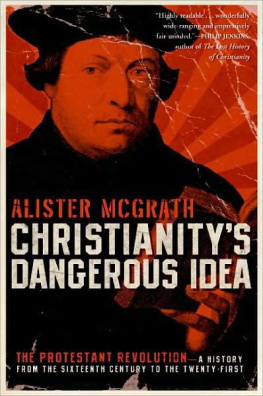
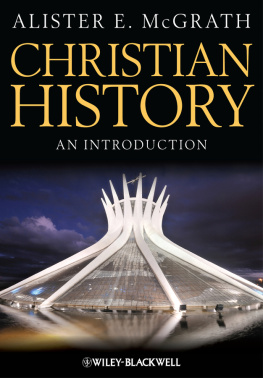


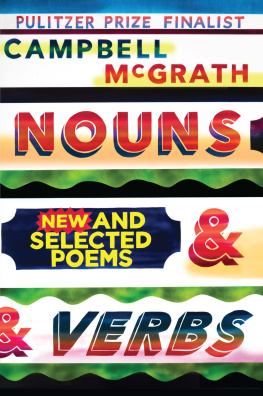


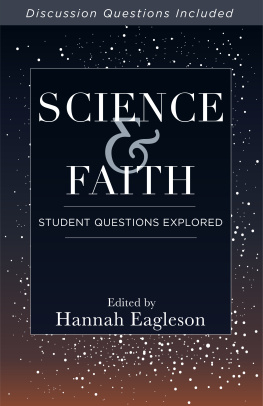
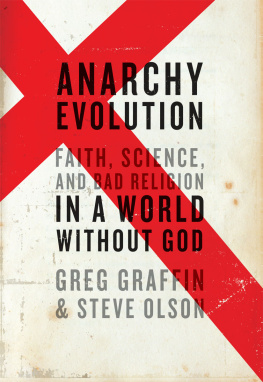


 The paper used in this publication meets the minimum requirements
The paper used in this publication meets the minimum requirements